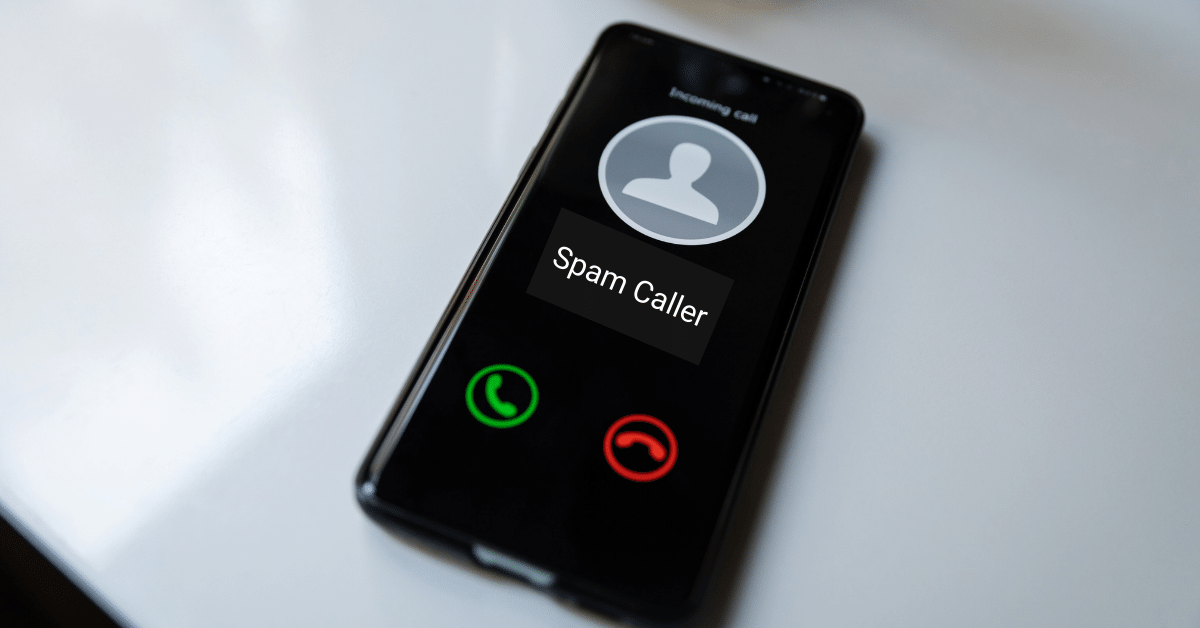You're a legitimate business owner, not a scammer. So why does your number show up as spam on customers' phones? This issue is more than just a minor technical mishap. It could damage your business reputation and cause you to lose customers.
It's all the fault of real scammers who bombard customers with malicious robocalls every day. Americans received 50 billion of these calls in 2021. Now the government is taking action and pressuring phone carriers to implement new tools and technologies that prevent scammers from reaching people on the phone. However, many businesses like yours are getting caught in the crossfire and having their calls mislabeled as spam or scam.
Learn the answer to the question "Why does my phone number show up as spam?" below.
What is "Scam Likely?"
"Scam," "Scam Likely," and "Spam Likely" are different labels that appear on Caller I.D. during an inbound call. Phone carriers use these labels to warn call recipients that an inbound call might be a robocall scam.
Carriers implemented call labels because of government initiatives like the Robocall Taskforce, the TRACED Act and the resulting STIR/SHAKEN framework—established to protect consumers from dangerous robocallers. It works like this:
- STIR/SHAKEN requires telecom carriers to know their customers and to insert a validation token, called an Attestation into each call packet. If a taken is missing or if the Attestation is less than an "A" Attestation, a label like "Scam Likely" may appear.
- Carriers verify that each call that is originated on its network has a verified Caller ID number that is authorized to be used by the company that placed the call. A label like "Scam Likely" may appear if a carrier can't verify a number.
- The FCC gave telecom companies safe harbor if they label or block a phone call in error. In other words, if they make an error and label your call as spam, the telecom carrier is not responsible for hurting your business.
Although the government and carriers have good intentions, many legitimate businesses mistakenly have their numbers flagged as spam. That can spell disaster for companies that rely on outbound calls to connect with prospective customers and move them through their sales and marketing funnels. Telemarketing companies, for example, are unlikely to survive if carriers incorrectly label their numbers.
Reasons Why Your Number Shows as Spam
If you're wondering, "Why does my phone number show up as spam?" there could be several reasons.
You're Making Too Many Calls
Some businesses make hundreds or even thousands of outbound calls to prospective customers every day. This business practice is legal unless customers are on the Do Not Call Registry (DNC) or express they don't want to receive communications.
Some phone carriers have thresholds for the number of calls that originate from a specific number in a particular period. The mistaken belief here is that numerous calls in quick succession must come from an automated machine, not a human being. Therefore, a phone carrier might think your number belongs to a robocaller and label it as spam.
You can avoid having calls flagged in this instance by regularly switching your phone numbers or purchasing new numbers for outbound dialing. Again, this is legal and could help you connect with prospective customers again. Larger outbound call centers are experts at number-switching (and other methods for dealing with flagged numbers), but few small- and medium-sized businesses use this technique. Try it for yourself and see if it solves the issue.
A Customer Reported Your Number
Unfortunately, this problem happens all the time, and for good reason. Consumers are becoming increasingly wary of unknown numbers calling their devices because of robocall scams. Even if a customer has previously spoken to your business, they might not recognize the number you're dialing from and report it to their phone carrier or an online database. If several customers do the same thing, a carrier might flag your number and label it as "Scam Likely."
Again, you can swap out or purchase new numbers to prevent the above issue from impacting your business. You might also want to contact carriers and ask them, "Why does my phone number show up as spam?"
You Use a Dialer
Auto-dialers like a predictive dialer can cause problems for your business and result in carriers flagging your calls. That's because a dialer typically calls customers in succession, even if there's no agent on the other end of the line. The same thing happens here. A carrier might misinterpret your calls as spam and flag your number.
You could purchase new numbers and assign them to your dialer or reconfigure the dialer so that it doesn't trigger a carrier's sometimes sensitive algorithms.
Another Way to Prevent Flagged Calls
QVD, an authorized STIR/SHAKEN elastic SIP provider, can ensure your calls aren't flagged or labeled as spam. Its Trusted Call Completion® product:
- Combines the highest level of Caller I.D. authentication, monitoring and remediation.
- Digitally signs and delivers your calls with full attestation (A Attestation) while working with other STIR/SHAKEN providers to ensure the call reaches the intended recipient without a label.
Using Trusted Call Completion (R) can help you sell more products to services to customers over the phone and restore your hard-earned business reputation.
Why Does My Phone Number Show Up as Spam? Final Word
There's nothing worse for a company that relies on outbound marketing than having its numbers flagged and labeled as spam. That can cause extreme damage and make it harder to sell products and services. If a carrier has flagged your number as "Scam Likely," try switching your numbers, changing dialer settings, and working with an authorized STIR/SHAKEN elastic SIP provider like QVD. To learn more, visit our Spam Likely key challenges page.
Talk to an expert about flagged numbers now.
-Kirk P. is a freelance writer who creates content for businesses in the telecommunications industry.
Angela Garfinkel, Director at Quality Voice and Data, brings over 30 years of experience in call center and business process outsourcing. Well known in the telemarketing and telecommunications industry, she co-authored a course for The Direct Marketing Association and actively participates in professional groups like PACE. Her educational background includes an MBA and an undergraduate degree in Telecommunications Management from the University of Nebraska.

